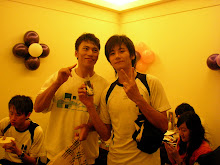Beck, D. M., & Kastner, S. (2007). Stimulus similarity modulates competitive interactions in human visual cortex. Journal of Vision, 7(2), 19 11-12.
Abstract:
When multiple visual stimuli are simultaneously presented in a neuron's receptive field, they often interact with each other by mutually suppressing their visually evoked responses, suggesting that multiple stimuli present at the same time in the visual field compete for neural representation. Previous research has shown that these suppressive interactions can be biased by top-down influences such as spatially directed attention, as well as by the bottom-up factor of visual salience. Using fMRI, we asked whether competitive interactions might also be modulated by other bottom-up factors and tested the effects of stimulus similarity. Specifically, we found that suppressive interactions in area V4, measured by comparing activity evoked by simultaneous (potentially competing) and sequential (noncompeting) presentations, were reduced when four items were identical relative to when the four items differed in color and orientation. Such a result is consistent with the prediction that competition is more likely to occur between groups than within a group.
Note:
The stimulus similarity is related to the concept of perceptual grouping.
Because of the limitation of processing capacity, people have to suppress the irrelevant information. Biased competition theory has been proposed to explain how people select and inhibit the information. Top-down and bottom process both influence the selection of information. This hypothesis may predict that suppressive interactions only occur between rather than within perceptual groups. There is no need to inhibit the irrelevant information when stimuli were grouped. Previous findings also showed that the activity in the intermediate visual area was less active when stimuli were simultaneously presented than when stimuli were sequentially presented, because simultaneous presentation leads to compete with the limited capacity.
To combine the grouping and temporal properties in stimuli presentation, the authors manipulated four gabor patches in color and orientation with simultaneous or sequential presentation. Participants were required to identify the target letter in the center while the gabor patches were presented in the receptive field. Results showed an interaction between the stimulus type (grouping) and type of presentation. When stimuli were grouped, there was no difference between different types of presentation. In contrast, when stimuli were not grouped, it shoed visual area is less active with a simultaneous presentation than with a sequential presentation.
I think this result can be applied to what I have done about the attention selection on features of an attended object. Because features were grouped based on the same location, no competition should be observed (biased competition occurs among different stimuli). The effect of feature-based selection on visual memory should be discussed.
This blog is about my research and what I am interested in. I will keep updating new information. Hope all of you enjoy it.
Labels
訂閱:
張貼留言 (Atom)
About Me

- Yang Cheng-Ta (楊政達)
- I am Yang Cheng-Ta. I am a assistant professor at the department of psychology and institute of cognitive science, National Cheng Kung University (NCKU). I graduated from National Taiwan University (NTU). My supervisors were Prof. Yeh Yei-Yu and Prof. Hsu Yung-Fong. My major is cognitive psychology and mathematical psychology. My research interests are human attention and memory. My research topic is about why people cannot detect a change in the visual environment which is so-called “change Blindness”. I investigate the mechanism underlying change detection and how people make a correct detection decision. I am also interested in the mathematical modeling of human behavior. Besides, I like to play volleyball, go to gym, and swim when I am free. I also like to listen to the Chinese opera and still keep learning it. These are brief descriptions about me. If you are interested in me or share interests with me, contact with me at yangct@mail.ncku.edu.tw.
My Web
Personal Information
Conference
- 2010.3.7.-3.12. annual meeting of visual science society ()2009.12.1.截止)
- 台灣心理學會第48屆年會,9.26.-9.27.台大開會。投稿時間即將於7月31日截止。
- The 50th Annual Meeting of psychonomic society at Boston 2009.11.19.-11.22. (6月1日前截止投稿)
- 2009.6.24.-6.25. workshop of attention and perception (5.27.前截止投稿)
- 2009.8.1.-8.4. conference of Math Psych (4.31.截止)
- Annual meeting of visual science society May 8-13, 2009 (12.2.截止投稿)
- 第47屆台灣心理學年會 師大 (7.31截止)
- 13th workshop of attention and perception(嘉義中正大學)
- OPAM November, 13th, 2008, Chicago, Illinois ( 7月1日截止)
- 49th ANNUAL MEETING OF THE PSYCHONOMIC SOCIETY, Chicago Hilton Hotel, Chicago, Illinois, Thursday, November 13 – Sunday, November 16, 2008 (6月2日截止)
- NathPsych (四月一日截止)
- 華人心理學會註冊
- 2008.6.11-14 第六屆華人心理學家學術研討會 (一月底截止)
Shared Resources
- 用endnote寫論文
- working memory guides attention的討論文章
- E-Prime範例八:reaction time and accuracy
- E-Prime 範例七:feature integration theory
- E-Prime範例六:staircase 直接用程式顯現螢幕顏色
- signal detetcion theory
- OL釘書機
- E-Prime範例五:改變偵測(隨機指定位置與顏色)
- E-Prime範例四:stair case(二下一上)
- E-Prime範例三:false memory
- 神奇撲克牌變色魔術
- E-Prime範例二:primary memory
- E-Prime範例一:depth of processing
- Youtube 整理change blindness的範例
- E-Prime User's Guide
- E-Prime Introduction
- E-Prime data analysis
- E-Prime 中文使用說明 (「林思宏」改版,第一版由「黃卓寧」(2005.9.)撰寫)
Useful Links
- slideshare
- Associations for Psychological Science
- Visual Science Society
- 行政院國科會
- Psychonomic Society
- American Psychological Association
- Society for Mathmatical Psychology
- Yahoo MathPsych student
- National Taiwan University
- Department of Psychology, National Taiwan University
- ScienceDirect
- Taylor & Francis
- IngentaConnect
Online Resources
- Lee's homepage introduciton to matbugs
- hint of writing winbugs
- Matbugs: use matlab to interface with winbugs
- how to use winbugs and related issues (by 林永雋)
- Bayes data analysis
- 2008 科學季 眼界奇觀 (我與大學部小朋友共同製作)
- Hierarchical Signal Detection Model (Jeff's lab)
- labmeeting
- American Journal Experts
- ERRNET
- A theory of visaul attention
- STATSOFT
- E-Prime
- E-prime tutorial
- R
- Pubmed
- MatLab Codes
- Google Scholar
- Semantic association calculation
- Neuroimaging Resource
- Association Norm
沒有留言:
張貼留言